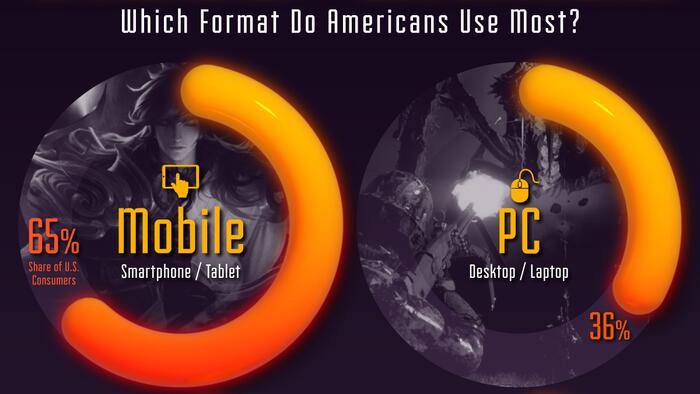Gaming has evolved into a multifaceted industry, captivating a wide range of consumers across various platforms, from consoles to mobile devices. Recent insights from a Circana survey conducted between May and June 2024, which involved 5,100 active gamers in the U.S., shed light on the gaming landscape in terms of device preferences and demographic trends. Kayla Zhu’s graphic from Visual Capitalist illustrates the share of American consumers aged two and up who engaged in gaming on selected devices in the previous month. The major device categories evaluated include mobile devices (iPhones, Android smartphones, tablets), computers (desktops and laptops), consoles (various PlayStation, Xbox, and Nintendo models), and other gaming formats (VR headsets and child-oriented devices).
The findings reveal that gaming is a prevalent activity in the U.S., with approximately 71% of consumers having played video games recently. Among these platforms, mobile gaming emerges as the dominant force, with an impressive 65% of individuals opting for mobile devices during the same period. This preference for mobile can largely be attributed to the convenience and accessibility that smartphones and tablets offer. Interestingly, over half of gamers’ total weekly playtime is dedicated to mobile formats, highlighting how deeply ingrained mobile gaming has become in people’s daily routines. The ease of carrying devices and the affordability of mobile games also contribute to their popularity.
Meanwhile, the competition between PC and console gaming is tight, with 36% of respondents gaming on PCs and 35% on consoles. Financial data from 2023 illustrates that console gaming slightly dominates the market, representing 57% of the industry share with revenues of about $53.1 billion, compared to PC gaming, which earned $40.4 billion. This suggests a balanced preference among gamers, revealing that while mobile devices are favored for casual play, both PC and consoles cater to more immersive gaming experiences. The quality of graphics, processing power, and game selection on these platforms often attract dedicated gamers who seek these more robust experiences.
Another notable category is the “Other” gaming segment, which has experienced a modest growth of 2% since 2022. This sector includes virtual reality (VR) gaming, which is witnessing rising popularity, particularly among teenagers. Recent statistics indicate that the weekly use of VR has increased from 10% to 13%, and ownership of VR headsets has also seen a slight uptick from 31% to 33% in just six months. This trend suggests that as technology advances, the appeal of VR gaming is on the rise, possibly leading to further market expansion in the coming years.
Generational preferences significantly influence gaming habits, with younger audiences, specifically Gen Alpha, Gen Z, and Millennials, demonstrating a stronger inclination towards PCs and consoles. Older generations, such as Gen X and Baby Boomers, tend to gravitate towards puzzle and casual games, mainly through mobile devices. This diverging pattern underscores the shifting landscape of gaming preferences across demographics, as younger people engage more with immersive and competitive gaming experiences, while older players are met with engagement through simpler, accessible formats.
These findings reflect a growing awareness of the gaming industry’s diversity and its rapidly evolving nature. As the distinctions in device preference and gaming genre become clearer, stakeholders can benefit from garnering insights into audience behaviors and trends. For those looking to further understand the dynamics of the gaming sector, the exploration of various factors such as consumer demographics, device preferences, and gaming genres is crucial. The evolving tapestry of the gaming world suggests an industry in continuous flux, highlighting how convenience, accessibility, and immersive experiences play integral roles in shaping consumer choices.

